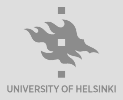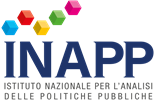The challenges for geography in higher education in European universities
Abstract
This article reports about a joint EUGEO/EUROGEO/IGU panel discussion at the EUGEO Congress in May2019 in Galway, Ireland about the challenges for geography in higher education in European universities. Although the situation is different in the various European countries, the geography departments are facing several common challenges, such as limited budgets for teaching, university managers, politicians, employers and the general public that do not know what geography is and a gap between geography in primary and secondary education and in higher education. The article concludes that communication about the discipline of geography is a key factor and gives some examples of successful ways of communicating in order to make geography more visible.References
BBC, “Marketization of Higher Education”, 2017, https://hemarketisation.wordpress.com /tag/sub-prime/.
Béneker T., “Aardrijkskunde vecht voor positie”, Geografie, 2013, pp. 58-64.
European Commission, Education and training monitor Croatia, Luxembourg, Publications Office of the European Union, 2018.
Frazier A.E. and Wikle T.A., “Renaming and rebranding within U.S. and Canadian geography departments, 1990-2014”, The Professional Geographer, 69, 1, 2017, pp. 12-21.
Garvin Th., “The shifting context of academic geography in Canada”, Canadian Geographer, 63, 3, 2019, pp. 405-412.
Geographical Society of Ireland, 2019, http://www.geographicalsocietyireland.ie.
Gibson C., “Geography in Higher Education in Australia”, Journal of Geography in Higher Education, 31, 1, 2007, pp. 97-119.
Hill D. and Kumar R. (Eds)., “Global Neoliberalism and Education and its Consequences”, New York, Routledge, 2012.
Hudson P.F and Hinman S.E., “The integration of geography in a curriculum focused to internationalization: an interdisciplinary liberal
arts perspective from the Netherlands”, Journal of Geography in Higher Education, 41, 4, 2017, pp. 549-561.
Kocsis K., “Adalékok a geográfia jelen helyzetének megítéléséhez a Kárpát-Pannontérség országaiban” [Some facts on the position of geography in the Carpatho-Pannonian area], Paper presented at the 8th Hungarian Geographical Conference (Miskolc- Lillafüred, 2-4 September 2014), 2014.
Kong L., “The Promises and Prospects of Geography in Higher Education”, Journal of Geography in Higher Education, 31, 1, 2007, pp. 13-17.
Magaš D., “Geography and geographers at higher-education institutions in Croatia, excluding the Faculty of science in Zagreb”, Geoadria, 12, 2, 2007, pp. 149-195.
Murphy A.B., “Geography’s Place in Higher Education in the United States”, Journal of Geography in Higher Education, 31, 1, 2007, pp. 121-141.
O’Reilly G., “Preparing Critically and Globally Conscious Teachers”, in Gilles J.-L. (Ed.), Linking Research and Training in Internationalization of Teacher Education, Bern, Peter Lang, 2017.
Sidaway J.D. and Johnston R.J., “Geography in Higher Education in the UK”, Journal of Geography in Higher Education, 31, 1, 2007, pp. 57-80.
Siska-Szilasi B., Kóródi T. and Vadnai P., “Measuring and interpreting emigration intentions of Hungarians”, Hungarian Geographical Bulletin, 65, 4, 2016, pp. 361-368.
Tapiador F. J. and Martí-Henneberg J., “Best of Times, Worst of Times: A Tale of Two (Spanish) Geographies”, Journal of Geography in Higher Education, 31, 1, 2007, pp. 81-96.
Waddington S., Does Geography Have a Future?, 2018, http://www.geographicalso cietyireland.ie/gsi-news/does-geographyhave- a-future-shelagh-waddington.
Downloads
Issue
Section
License
The Author assigns to the Nuova Cultura and to Italian Association of Geography Teachers all rights under copyright that can exist in and to the submitted paper. The Author warrants that the paper and images (photos, maps, graphs etc.) are original and that he/she is the Author of the submitted contribution and its parts; in the case of images taken by other publications, the Author must provide a specific authorization and must pay in advance any copyright.

This work is licensed under a Creative Commons Attribution 4.0 International License.












